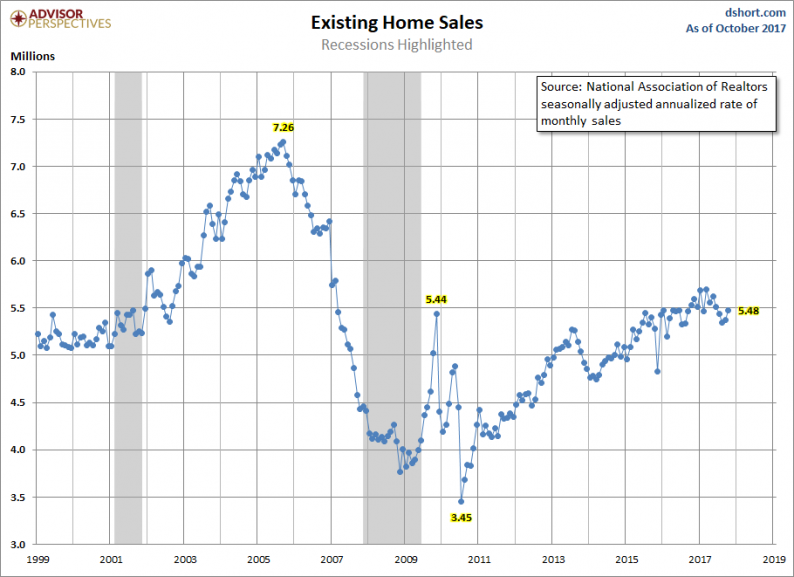This morning’s release of the October Existing-Home Sales increased from the previous month to a seasonally adjusted annual rate of 5.48 million units. The Investing.com consensus was for 5.42 million. The latest number represents a 2.0% increase from the previous month and a 0.9% decrease year-over-year.
Here is an excerpt from today’s report from the National Association of Realtors.
Lawrence Yun, NAR chief economist, says sales activity in October picked up for the second straight month, with increases in all four major regions. “Job growth in most of the country continues to carry on at a robust level and is starting to slowly push up wages, which is in turn giving households added assurance that now is a good time to buy a home,” he said. “While the housing market gained a little more momentum last month, sales are still below year ago levels because low inventory is limiting choices for prospective buyers and keeping price growth elevated.”
Added Yun, “The residual effects on sales from Hurricanes Harvey and Irma are still seen in parts of Texas and Florida. However, sales should completely bounce back to their pre-storm levels by the end of the year, as demand for buying in these areas was very strong before the storms.” [Full Report]
For a longer-term perspective, here is a snapshot of the data series, which comes from the National Association of Realtors. The data since January 1999 was previously available in the St. Louis Fed’s FRED repository and is now only available from January 2014. It can be found here.

Over this time frame, we clearly see the Real Estate Bubble, which peaked in 2005 and then fell dramatically. Sales were volatile for the first year or so following the Great Recession. The latest estimate puts us back to levels reached before the recession.
The Population-Adjusted Reality
Now let’s examine the data with a simple population adjustment. The Census Bureau’s mid-month population estimates show a 17.4% increase in the US population since the turn of the century. The snapshot below is an overlay of the NAR’s annualized estimates with a population-adjusted version.













Leave A Comment